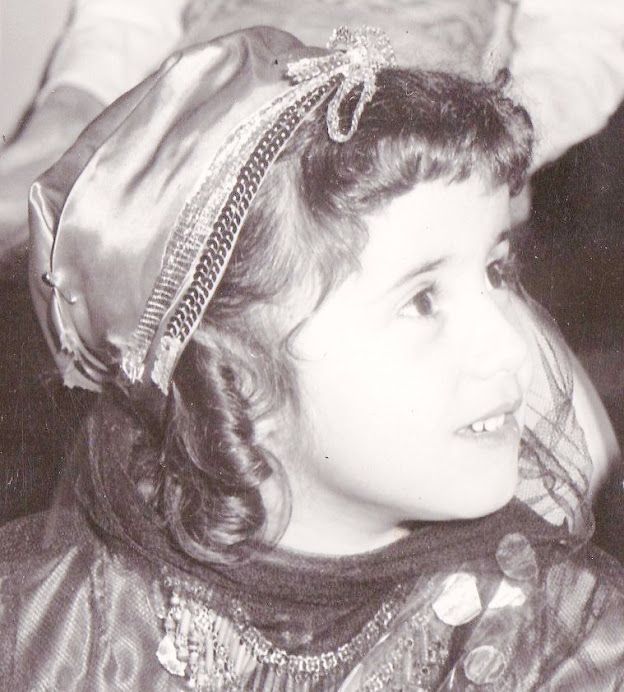
The History of Santa Claus
By Cookie Nassef
The following are based on documented evidence. It is obvious that the pagan deities and folklore go back beyond A.D. and the custom of gift-giving was practiced by peoples of the Ancient World. The list underneath is accurate, but incomplete.
The following are based on documented evidence. It is obvious that the pagan deities and folklore go back beyond A.D. and the custom of gift-giving was practiced by peoples of the Ancient World. The list underneath is accurate, but incomplete.
270-280AD Birth of St. Nicholas, who was to become the most accurate and actual ancestor of Santa Claus. He was ordained Bishop whilst still a very young man, and spent his life helping the poor and underprivileged. He loved children and often went out at night disguised in a hooded cloak, to leave necessary gifts of money, clothing or food at the windows of unfortunate families.
St. Nicholas died on the 6th December. In 540AD there was an elaborate Basilica built over his tomb, and dedicated to the saint.
St. Nicholas died on the 6th December. In 540AD there was an elaborate Basilica built over his tomb, and dedicated to the saint.
600AD The Saxons which invaded and settled Britain had the custom of giving human characteristics to the weather elements, welcoming the characters of King Frost, Lord Snow etc. to their homes in the hopes that the elements would look kindly on them. They would dress an actor in a pointed cap and cloak or cape, and drape him with Ivy, bringing him into their midst, and bidding him join their feast. He was to represent the Season, and would be treated with all respect, and drink toasts to him.
842AD First written life of St. Nicholas listing all his miracles, by Methodius, Bishop of Constantinople.
850AD The Clergy of Cologne Cathedral were commemorating the death of the saint by giving fruit and cookies to the boys of the cathedral school, on the 6th December.
987AD Nicholas became Patron Saint of Russia. By this time, his fame had spread far and wide, and he was adopted by many guilds and groups as their patron, including: Sailors; Children; Spinsters; Pawnbrokers. All bearing a direct reasoning to the stories told about Nicholas. As patron saint of sailors, his effigy was the figurehead of many ships, and thus his cult spread across the seas to Britain, (and later to the New World).
1087AD Italian Merchants steal the bones of St. Nicholas from his tomb in Demre, and take them to Bari, Italy. This was unofficially approved by the Church, which was anxious in case the shrine of the saint was desecrated in the many wars and attacks in the region. Also, by that time, the break between the Universal Church creating Roman Catholic and Eastern Orthodox, was a contributing factor. The Roman Church felt that the bones of this most popular of saints should be in their safe keeping!
1119AD Life of St. Nicholas written by a Norman monk named Jean.
1120AD Nuns in Belgium and France were giving gifts to the children of the poor, and those in their care, on the Saints Feast Day, 6th December.
1150AD Guace, a Norman French scribe to the royal household, wrote the life of Nicholas as Metric Poems for use as sermons.
1200AD Hilarius, who studied under Peter Abelard, wrote the first 'musical' play about Nicholas.
1300AD Until this time Nicholas was portrayed with a short dark beard, like an Eastern Bishop. Belief in Odin, flying through the skies on his eight legged white horse, Sleipnir, with his long white beard flowing, was superimposed over the saints’ characteristics, and he developed a white beard. In Germanic countries he was further overlaid with the character of 'Winterman' who supposedly came down from the mountains with the snows, dressed in furs and skins, heralding winter. This character was also known in Scandinavia, where the Laps believed that he herded the reindeer down to lower pastures, and this was a sign that the winter snows were coming.
Laps Homes had one opening, which was both door and smoke hole. They were dome shaped houses, usually covered with skins, and usually with top openings; a reason for the subsequent romantic story that Santa comes down the chimney.
1400AD Over 500 songs and hymns had been written in honour of Nicholas by this date.
1492AD Christopher Columbus arrived in Haiti on December 6th, naming the port St. Nicholas in thanks for the safe journey.
1500AD More than 700 churches in Britain alone were dedicated to St. Nicholas by this date.
There is some small evidence to support the fact that in Europe, street parades were held led by a man dressed in Bishops robes and Mitred hat, riding a horse, on the feast of St. Nicholas, in the late Middle Ages.
There is some small evidence to support the fact that in Europe, street parades were held led by a man dressed in Bishops robes and Mitred hat, riding a horse, on the feast of St. Nicholas, in the late Middle Ages.
In Britain, each parish would employ a man from outside the parish to dress in long hooded guise, and go to each home leaving a small gift and taking back any important news of the needy to the priests.
1616AD Ben Jonson presented his play, 'Christmas, his Masque' at the Court of King James. In this the Season of Christmas is represented by an actor, and his entourage consists of the special characteristics of Christmas impersonate. Minced Pie, Plum Pudding etc.
1616AD Ben Jonson presented his play, 'Christmas, his Masque' at the Court of King James. In this the Season of Christmas is represented by an actor, and his entourage consists of the special characteristics of Christmas impersonate. Minced Pie, Plum Pudding etc.
1626AD A fleet of ships, led by the 'GOEDE VROWE' (Goodwife), which had a figurehead of St. Nicholas, left Holland for the New World. They purchased some land from the Iroquois, for $24, named the village 'NEW AMSTERDAM' (now New York), and erected a statue in the square to St. Nicholas.
1645AD A Broadsheet appeared on the streets of London, taunting the Government by a humorous political 'scandal' about the conviction and imprisonment of Christmas, and the Hue and Cry after his escape thereof.
1647AD Christmas was banned in England, and the traditional mimming plays were visited by Father Christmas, who issued a taunting challenge to the government. "In comes I, Old Father Christmas, Be I welcome or be I not, I hope that Christmas will ne'er be forgot."
1678AD A book was published in London entitled 'The Examination and Trial of old Father Christmas' and his clearing by Jury.
From the 17th - 19th century it was the country mimmers plays which kept Father Christmas alive in Britain. With the 'cleansing' of religious popery, it is interesting to note that the saintly bishop, represented by the Parish gift-bringing visitor was replaced once more by the half pagan Impersonation of the Element or Season of Christmas.
1651AD The State of Massachusetts, settled by English Puritans, banned all observation of Christmas.
1664AD New Amsterdam was fought over and won by the British, who named it New York. They first banned St. Nicholas, and his statue fell. But later came to accept the pleasures of the festival of the saint, not associating it with Christmas, it being held on December 6th.
1773AD St. Nicholas first made the news in the New York Gazette which referred to him as otherwise known as St. A. Claus.
1809AD American writer, Washington Irving, described St. Nicholas in his 'History of New York', in a description of the figurehead on the ship Geode Vrowe, as being ..."equipped with a low brimmed hat, huge pair of Flemish hose and a pipe that reached to the end of the bowsprit....."
1810AD The New York Historical Society held the first official St. Nicholas celebration, and the occasion was commemorated with the production of the first portrait of St. Nicholas in the USA, and a full description of his characteristics.
1821AD A learned professor, student of European folklore, and poet, Reverend Clement Moore, gathered together all the elements of European lore, deities and folk-characters, added them to the descriptions of his fellow countrymen at the Historical Society and Washington Irving, and created a poem which was to become the gospel of Santa Claus for every writer and artist for a century to come. Called 'A visit from St. Nicholas ' or 'The night before Christmas' But he did this poem for his children, and when it was published by a friend, Moore did not allow his name to be associated with it until 1837.
There were subsequently many different publications, each illustrated according to the characteristics dictated by the poem, published from 1823 onwards, and while Thomas Nast has been attributed with being the first to illustrate Santa Claus, this assumption has long since been corrected by a vast number of earlier illustrations being found.
1863AD Thomas Nast did a political cartoon of Santa entitled 'Santa in Camp', for Harpers Weekly Journal. Dressed in Stars and Stripes Santa had joined the civil war on the side of General Grant in the North.
Perhaps he could have also appeared (being Santa, and strictly neutral) dressed in rebel grey for the South, but if so it was a private drawing as the South did not have the publishing resources of the North.
1864-1886AD Thomas Nast continued to draw Santa Claus every year, and became known as THE Santa Claus artist of the mid-1900's.
Meanwhile Britain was importing illustrations and cards depicting Santa Claus from Germany.
He was called Father Christmas by the English, following the 17th changes, and that name stuck.
He was usually represented as a tall, almost aesthetic character, saintly and stern rather than the 'Jolly Elf' character being portrayed by the Americans.
In the 1860's the English custom of a visit from Father Christmas was revived and established as the character visiting on Christmas Eve and leaving gifts for children in their stockings. Images, dolls and artwork from Germany helped to strengthen this custom.
The Germanic images showed him as a saint, in bishop’s robes, as a Winterman in furs, as a saintly old man, often seen in the company of the Holy Child, and as a gift-bringer in robes of every colour from brown, white, green blue to hues of gold, pink and red. Even in this latter guise, his countenance was serious more often than jolly, though laughing Santas did appear. These were usually those which were influenced by the American imagery, and intended for export to the USA.
1870's Santa Claus began to put in appearances in department stores in the USA and Canada.
1873 Louis Prang of Boston published the first American Christmas card. His images showed Santa Claus much in the same tradition as the earlier American images, but with a softer, gentler look; more the saintly old gent than the jolly old elf.
1873 Louis Prang of Boston published the first American Christmas card. His images showed Santa Claus much in the same tradition as the earlier American images, but with a softer, gentler look; more the saintly old gent than the jolly old elf.
1890's Father Christmas began to appear in English Stores.
1922 Norman Rockwell created a perfect blend of saintly and jolly when he created Santa for the Saturday Evening Post.
1931 Coca Cola began their major promotion using Santa to promote their drink. Their artist, Haddon Sundblom created Santa in his own image! It is the Coca-Cola Santa which springs to mind now as the traditional Santa.
1948 Department Stores in Britain increased the thrill of their Santa Grotto with train rides, sleigh rides, trip to the moon and elaborate animated scenes.
From the Mid-1950's, the English Father Christmas slowly gives way to American Santa Claus.
1980's European traditions of Gift-bringers begin to give way to Santa Claus. Spain’s Three Kings , Italy's Befana, and Sweden's Tomte, in particular have all given way to Santa as the anticipated Gift-bringer, sometimes even as an additional gift-bringer.
The American version of the Santa Claus figure received its inspiration and its name from the Dutch legend of Sinter Klaus, brought by settlers to New York in the 17th century.
As early as 1773 the name appeared in the American press as "St. A Claus," but it was the popular author Washington Irving who gave Americans their first detailed information about the Dutch version of Saint Nicholas. In his History of New York, published in 1809 under the pseudonym Dietrich Knickerbocker, Irving described the arrival of the saint on horseback (unaccompanied by Black Peter) each Eve of Saint Nicholas.
This Dutch-American Saint Nick achieved his fully Americanized form in 1823 in the poem A Visit From Saint Nicholas more commonly known as The Night Before Christmas by writer Clement Clarke Moore. Moore included such details as the names of the reindeer; Santa Claus's laughs, winks, and nods; and the method by which Saint Nicholas, referred to as an elf, returns up the chimney. (Moore's phrase "lays his finger aside of his nose" was drawn directly from Irving's 1809 description.)
The American image of Santa Claus was further elaborated by illustrator Thomas Nast, who depicted a rotund Santa for Christmas issues of Harper's magazine from the 1860s to the 1880s. Nast added such details as Santa's workshop at the North Pole and Santa's list of the good and bad children of the world. A human-sized version of Santa Claus, rather than the elf of Moore's poem, was depicted in a series of illustrations for Coca-Cola advertisements introduced in 1931.
In modern versions of the Santa Claus legend, only his toy-shop workers are elves. Rudolph, the ninth reindeer, with a red and shiny nose, was invented in 1939 by an advertising writer for the Montgomery Ward Company.
In looking for the historical roots of Santa Claus, one must go very deep in the past. One discovers that Santa Claus as we know him is a combination of many different legends and mythical creatures.
The basis for the Christian-era Santa Claus is Bishop Nicholas of Smyrna (Izmir), in what is now Turkey. Nicholas lived in the 4th century A.D. He was very rich, generous, and loving toward children. Often he gave joy to poor children by throwing gifts in through their windows.
The Orthodox Church later raised St. Nicholas, miracle worker, to a position of great esteem. It was in his honour that Russia's oldest church, for example, was built. For its part, the Roman Catholic Church honoured Nicholas as one who helped children and the poor. St. Nicholas became the patron saint of children and seafarers. His name day is December 6th.
The Orthodox Church later raised St. Nicholas, miracle worker, to a position of great esteem. It was in his honour that Russia's oldest church, for example, was built. For its part, the Roman Catholic Church honoured Nicholas as one who helped children and the poor. St. Nicholas became the patron saint of children and seafarers. His name day is December 6th.
In the Protestant areas of central and northern Germany, St. Nicholas later became known as der Weinachtsmann. In England he came to be called Father Christmas. St. Nicholas made his way to the United States with Dutch immigrants, and began to be referred to as Santa Claus.
Pompom-topped cap, would sally forth on the night before Christmas in his sleigh, pulled by eight reindeer, and climb down chimneys to leave his gifts in stockings children set out on the fireplace's mantelpiece.
Children naturally wanted to know where Santa Claus actually came from. Where did he live when he wasn't delivering presents? Those questions gave rise to the legend that Santa Claus lived at the North Pole, where his Christmas-gift workshop was also located.
In 1925, since grazing reindeer would not be possible at the North Pole, newspapers revealed that Santa Claus in fact lived in Finnish Lapland. "Uncle Markus", Markus Rautio, who compared the popular "Children's hour" on Finnish public radio, revealed the great secret for the first time in 1927: Santa Claus lives on Lapland's Korvatunturi - "Ear Fell."
The fell, which is situated directly on Finland's eastern frontier, somewhat resembles a hare's ears - which are in fact Santa Claus's ears, with which he listens to hear if the world's children are being nice. Santa has the assistance of a busy group of elves, who have quite their own history in Scandinavian legend.
Over the centuries, customs from different parts of the Northern Hemisphere thus came together and created the whole world's Santa Claus - the ageless, timeless, deathless white-bearded man who gives out gifts on Christmas and always returns to Korvatunturi in Finnish Lapland.
Since the 1950s, Santa has happily sojourned at Napapiiri, near Rovaniemi, at times other than Christmas, to meet children and the young at heart. By 1985 his visits to Napapiiri had become so regular that he established his own Santa Claus Office there. He comes there every day of the year to hear what children want for Christmas and to talk with children who have arrived from around the world. Santa Claus Village is also the location of Santa's main Post Office, which receives children's letters from the four corners of the world.
Santa Claus, legendary bringer of gifts at Christmas, is generally depicted as a fat, jolly man with a white beard, dressed in a red suit trimmed with white, and driving a sleigh full of toys drawn through the air by eight reindeer. Santa (also called Saint Nicholas and Saint Nick) is said to visit on Christmas Eve, entering houses through the chimney to leave presents under the Christmas tree and in the stockings of all good children. Although this familiar image of Santa Claus is a North American invention of the 19th century, it has ancient European roots and continues to influence the celebration of Christmas throughout the world.
Origins of the Legend, the historical Saint Nicholas was venerated in early Christian legend for saving storm-tossed sailors, defending young children, and giving generous gifts to the poor. Although many of the stories about Saint Nicholas are of doubtful authenticity (for example, he is said to have delivered a bag of gold to a poor family by tossing it through a window), his legend spread throughout Europe, emphasizing his role as a traditional bringer of gifts.
The Christian figure of Saint Nicholas replaced or incorporated various pagan gift-giving figures such as the Roman Befana and the Germanic Berchta and Knecht Ruprecht. The saint was called Sankt Nikolaus in Germany and Sanct Herr Nicholaas or Sinter Klaas in Holland.
In these countries Nicholas was sometimes said to ride through the sky on a horse. He was depicted wearing a bishop's robes and was said to be accompanied at times by Black Peter, an elf whose job was to whip the naughty children.
The feast day of Nicholas, when presents were received, was traditionally observed on December 6. After the Reformation, German Protestants encouraged veneration of the (Christ child) as a gift giver on his own feast day, December 25. When the Nicholas tradition prevailed, it became attached to Christmas itself. Because the saint's life is so unreliably documented, Pope Paul VI ordered the feast of Saint Nicholas dropped from the official Roman Catholic calendar in 1969. The term Christkindl evolved to Kriss Kringle, another nickname for Santa Claus. Various other European Christmas gift givers were more or less similar to Saint Nicholas: in France, Julenisse in Scandinavia, and Father Christmas in England.
The American version of the Santa Claus figure received its inspiration and its name from the Dutch legend of Sinter Klaas, brought by settlers to New York in the 17th century. As early as 1773 the name appeared in the American press as St. A Claus, but it was the popular author Washington Irving who gave Americans their first detailed information about the Dutch version of Saint Nicholas.
In his History of New York, published in 1809 under the pseudonym Dietrich Knickerbocker, Irving described the arrival of the saint on horseback (unaccompanied by Black Peter) each Eve of Saint Nicholas. This Dutch-American Saint Nick achieved his fully Americanized form in 1823 in the poem A Visit From Saint Nicholasmore commonly known as The Night Before Christmas by writer Clement Clarke Moore . Moore included such details as the names of the reindeer; Santa Claus's laughs, winks, and nods; and the method by which Saint Nicholas, referred to as an elf, returns up the chimney. (Moore's phrase lays his finger aside of his nose was drawn directly from Irving's 1809 description.)
The American image of Santa Claus was further elaborated by illustrator Thomas Nast who depicted a rotund Santa for Christmas issues of Harper's magazine from the 1860s to the 1880s. Nast added such details as Santa's workshop at the North Pole and Santa's list of the good and bad children of the world. A human-sized version of Santa Claus, rather than the elf of Moore's poem, was depicted in a series of illustrations for Coca-Cola advertisements introduced in 1931. In modern versions of the Santa Claus legend, only his toy-shop workers are elves. Rudolph, the ninth reindeer, with a red and shiny nose, was invented in 1939 by an advertising writer for the Montgomery Ward Company.
The fully detailed modern image of Santa Claus plays a part in Christmas celebrations around the world. People are reminded of Santa Claus through advertising, greeting cards, decorations, and the annual appearance of Santas in department stores and shopping malls (in some cases accompanied by Mrs. Claus and Santa's elves). The figure of Santa Claus occurs in motion pictures for example, Miracle on 34th Street 1947) and in songs such as Santa Claus Is Coming to Town, 1932) and Here Comes Santa Claus, 1947). Children write letters to Santa Claus and set out milk and cookies on Christmas Eve as a snack for Santa.
Although most adults view Santa as the embodiment of a spirit of giving, some argue that the modern image of Santa Claus conflicts with the true meaning of Christmas and promotes greed and commercialism. To reconcile the legend of Santa Claus with the religious significance of Christmas, some Christians emphasize that the modern figure is derived from legends about a saint who symbolized love, caring, and generosity.
How did the kindly Christian, good Nicholas, become a roly-poly red-suited American symbol for merry holiday festivity and commercial activity?
The first Europeans to arrive in the New World brought St. Nicholas. Vikings dedicated their cathedral to him in Greenland. On his first voyage, Columbus named a Haitian port for St. Nicholas on December 6, 1492.
In Florida, Spaniards named an early settlement St. Nicholas Ferry, now known as Jacksonville. However, St. Nicholas had a difficult time during the 16th century Protestant which took a dim view of. Even though both reformers and counter-reformers tried to stamp out St. Nicholas-related customs, they had very little long-term success; only in England were the religious folk traditions of Christmas permanently altered. (It is ironic that fervent Christians began what turned into a trend to a more secular Christmas observance.) Because the common people so loved St. Nicholas, he survived on the European continent as people continued to place nuts, apples, and sweets in shoes left beside beds, on windowsills, or before the hearth.
Colonists came to America after the Reformation in the 1500s. They were primarily Puritans and other Protestant reformers who did not bring Nicholas traditions to the New World.
What about the Dutch?
Although it is nearly universally reported that the Dutch did bring St. Nicholas to , scholars find limited evidence of such traditions in Dutch Colonial Germans in Pennsylvania held the feast of St. Nicholas, and several accounts do have St. Nicholas visiting New York Dutch on New Years' Eve. Patriots formed the Sons of St. Nicholas in 1773, not to honour Bishop Nicholas, but rather as a non-British symbol to counter the English St. George societies. This St. Nicholas society was similar to the Sons of St. Tammany in Philadelphia. Not exactly St. Nicholas, the children's gift-giver.
After the American Revolution, New Yorkers remembered with pride the colony's nearly-forgotten Dutch roots. John Pintard, influential patriot and antiquarian, who founded the New York Historical Society in 1804, promoted St. Nicholas as of both society and city. In January 1809, joined the society and on that year he published the satirical fiction, Knickerbocker's History of New York, with numerous references to a jolly St. Nicholas character. This was not a saintly bishop, rather an elfin Dutch burgher with a clay pipe.
These delightful flights of imagination are the origin of the New Amsterdam St. Nicholas legends: that the first Dutch emigrant ship had a figurehead of St. Nicholas; that St. Nicholas Day was observed in the colony; that the first church was dedicated to him; and that St. Nicholas comes down chimneys to bring gifts. Irving's work was regarded as the "first notable work of imagination in the New World."
The New York Historical Society held its first St. Nicholas anniversary dinner on December 6, 1810. John Pintard commissioned artist Alexander Anderson to create the first American image of Nicholas for the occasion. Nicholas was shown in a gift-giving role with children's treats in stockings hanging at a fireplace. The accompanying poem ends, "Saint Nicholas, my dear good friend! To serve you ever was my end, if you will, now, me something give, I'll serve you ever while I live."
The jolly elf image received a big boost in 1823, from a poem destined to become immensely popular, "A Visit from St. Nicholas," now better known as "The Night Before Christmas."
He was dressed all in fur, from his head to his foot,And his clothes were all tarnished with ashes and soot;A bundle of toys he had flung on his back,And he looked like a peddler just opening his pack.
He was dressed all in fur, from his head to his foot,And his clothes were all tarnished with ashes and soot;A bundle of toys he had flung on his back,And he looked like a peddler just opening his pack.
His eyes—how they twinkled!
his dimples how merry!
His cheeks were like roses,
his nose like a cherry!
His droll little mouth was drawn up like a bow,
And the beard of his chin was as white as the snow;
The stump of a pipe he held tight in his teeth,
And the smoke it encircled his head like a wreath;
He had a broad face and a little round belly,
That shook, when he laughed like a bowlful of jelly.
He was chubby and plump, a right jolly old elf. . . .
Washington Irving's St. Nicholas strongly influenced the poem's portrayal of a round, pipe-smoking, elf-like St. Nicholas. The poem generally has been attributed to, a professor of biblical languages at New York's Episcopal General Theological Seminary. However, a case has been made by Don Foster in Author Unknown, that actually penned it in 1807 or 1808. Livingston was a farmer/patriot who wrote humorous verse for children. In any case, "A Visit from St. Nicholas" became a defining American holiday classic. No matter who wrote it, the poem has had enormous influence on the Americanization of St. Nicholas.
Other artists and writers continued the change to an elf-like St. Nicholas, "Sancte Claus," or "Santa Claus," unlike the stately European bishop. In 1863, political cartoonist began a series of annual black-and-white drawings in Harper's Weekly, were based on the descriptions found in the poem and Washington Irving's work.
These drawings established a rotund Santa with flowing beard, fur garments, and an omnipresent clay pipe. As Nast drew Santas until 1886, his work had considerable influence in forming the American Santa Claus. Along with appearance changes, the saint's name shifted to Santa Claus—a natural phonetic alteration from the German Sankt Niklaus and Dutch.
Santa was then portrayed by dozens of artists in a wide variety of styles, sizes, and colours. However by the end of the 1920s, a standard American Santa—life-sized in a red, fur-trimmed suit—was emerging from the work of N. C. Wyeth, Norman Rockwell and other popular illustrators. In 1931 began thirty-five years of Coca-Cola Santa advertisements that popularized and firmly established Santa as an icon of contemporary commercial culture.
This Santa was life-sized, jolly, and wore the now familiar red suit. He appeared in magazines, on billboards, and shop counters, encouraging Americans to see Coke as the solution to "a thirst for all seasons."
This Santa was life-sized, jolly, and wore the now familiar red suit. He appeared in magazines, on billboards, and shop counters, encouraging Americans to see Coke as the solution to "a thirst for all seasons."
By the 1950s Santa was turning up everywhere as a benign source of beneficence, endorsing an amazing range of consumer products. This commercial success led to the North American Santa Claus being exported around the world where he threatens to overcome the European St. Nicholas, who has retained his identity as a Christian bishop and saint.
It's been a long journey from the Fourth Century Bishop of, St. Nicholas, who showed his devotion to God in extraordinary kindness and generosity, to America's jolly Santa Claus. However, if you peel back the accretions he is still Nicholas, Bishop of Myra, whose caring surprises continue to model true giving and faithfulness.
There is growing interest in reclaiming the original saint in the United States to help restore the spiritual dimension of this festive time. For indeed, St. Nicholas, lover of the poor and patron saint of children, is a model of how Christians are meant to live. A bishop, Nicholas put Jesus Christ at the centre of his life, his ministry, his entire existence. Families, churches, and schools are embracing true St Nicholas traditions as one way to claim the true centre of Christmas—the birth of Jesus. Such a focus helps restore balance to increasingly materialistic and stress-filled and Christmas seasons.
Christmas was spread to the Middle East early this century, or rather, late last century. Egypt started participating in both the Christian Christmas, on the 25th of December as well as the Coptic Christmas, on the 7 of January, and now even Moslems celebrate it.
H.N.




























+and+I+(4)+in+Washington+D.C.,+USA.jpg)














































